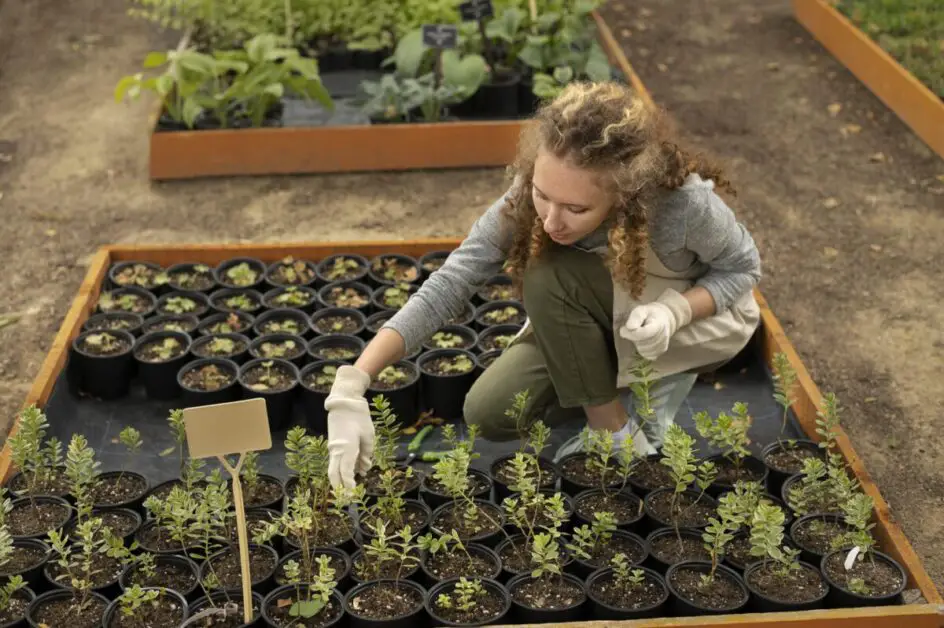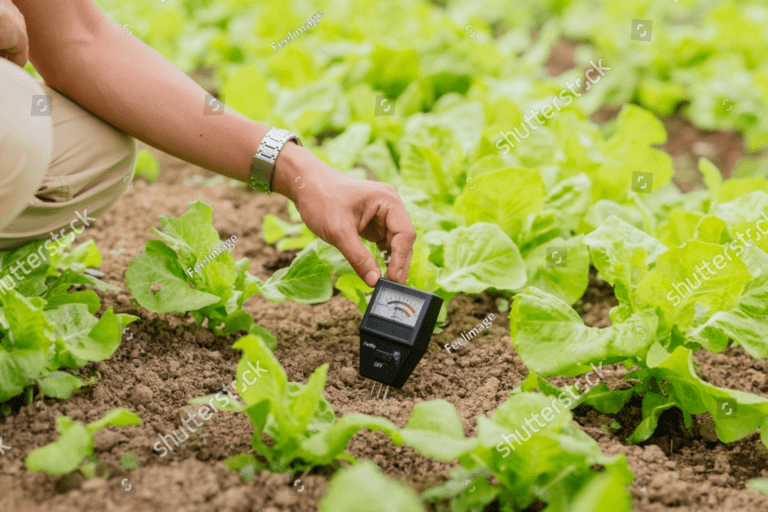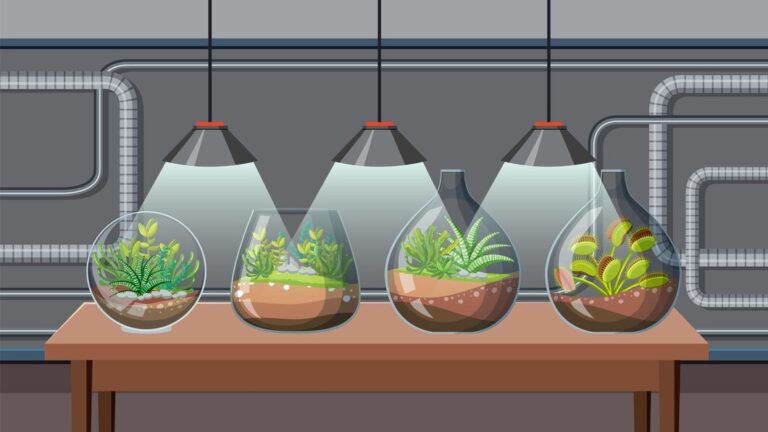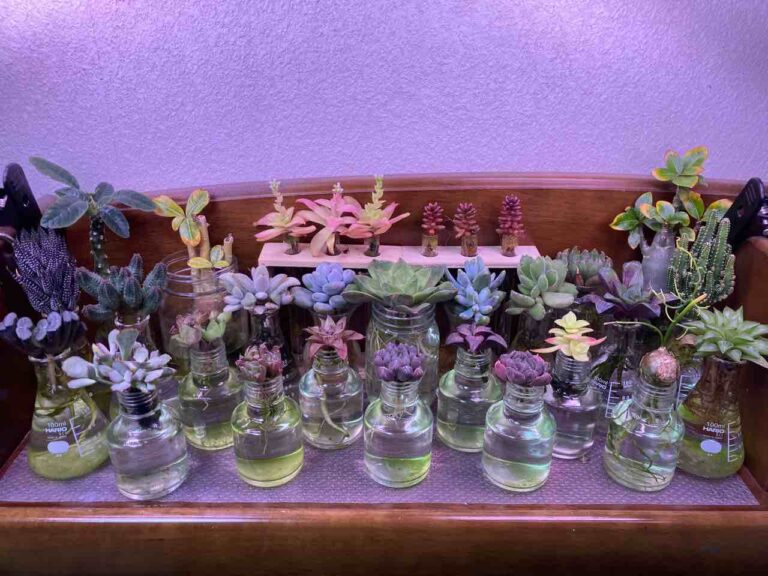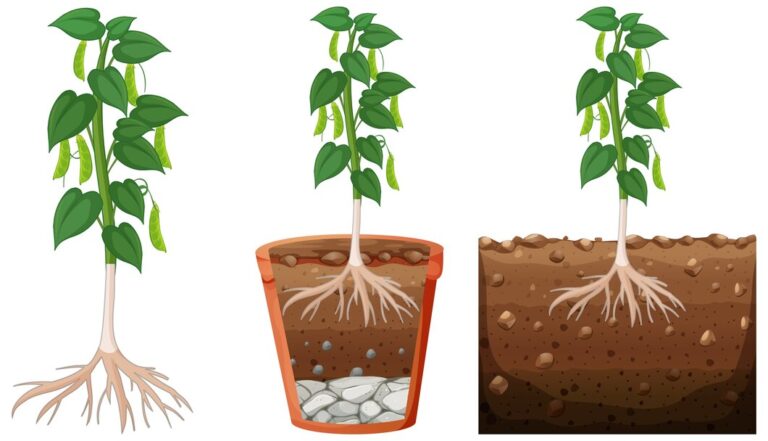How to Prune Your Hydroponic Plants for Better Growth and Health
Table of Contents
Key Benefits of Pruning for Hydroponic Plants
Pruning plays a crucial role in the growth and overall health of hydroponic plants. By selectively removing certain plant parts, gardeners can unlock a variety of key benefits that contribute to the success of their hydroponic systems.
First and foremost, pruning helps to maintain an ideal plant structure. By removing excess foliage and encouraging proper branching, gardeners can ensure that their hydroponic plants grow compactly and efficiently. This not only maximizes the use of available space but also promotes optimal air circulation and light penetration throughout the canopy. As a result, plants receive the necessary amount of oxygen and sunlight they need to thrive, leading to stronger and healthier growth.

In addition to improved structure and growth, pruning also offers an advantage in nutrient uptake and distribution. By removing competing shoots and redirecting energy towards the remaining ones, gardeners can ensure that nutrients are efficiently absorbed by the plant’s roots. This results in better nutrient uptake and distribution throughout the entire plant, leading to more balanced growth and higher yields. Moreover, pruning can help prevent nutrient deficiencies and imbalances, allowing hydroponic plants to reach their full potential.
Overall, the key benefits of pruning for hydroponic plants are clear. It promotes optimized plant structure, ensuring proper air circulation and light penetration. Additionally, it boosts nutrient uptake and distribution, leading to stronger, healthier, and more productive plants. Incorporating pruning techniques into your hydroponic gardening routine can greatly contribute to the overall success of your plants and enhance your gardening experience.
• Pruning helps maintain an ideal plant structure
• Removes excess foliage and encourages proper branching
• Maximizes use of available space
• Promotes optimal air circulation and light penetration throughout the canopy
• Provides necessary oxygen and sunlight for stronger and healthier growth
• Pruning improves nutrient uptake and distribution
• Removes competing shoots to redirect energy toward the remaining ones
• Ensures efficient absorption of nutrients by plant’s roots
• Results in better nutrient uptake and distribution throughout the entire plant
• Leads to more balanced growth and higher yields
• Overall, pruning promotes optimized plant structure, ensuring proper air circulation and light penetration.
• It also boosts nutrient uptake and distribution, leading to stronger, healthier, and more productive plants.
• Incorporating pruning techniques into your hydroponic gardening routine can greatly contribute to the overall success of your plants.
Identifying the Right Time to Prune Your Hydroponic Plants
Pruning plays a crucial role in maintaining the health and productivity of your hydroponic plants. However, it is important to identify the right time to prune to achieve the best results. Timing is essential when it comes to pruning, as doing it at the wrong time can have adverse effects on plant growth and development.
One key factor to consider when determining the right time to prune your hydroponic plants is their growth stage. It is generally recommended to prune plants during their vegetative stage when they are actively growing new leaves and stems. This allows for better recovery and regrowth after pruning. Pruning during the flowering or fruiting stage can disrupt the plant’s energy allocation and reduce the overall yield.
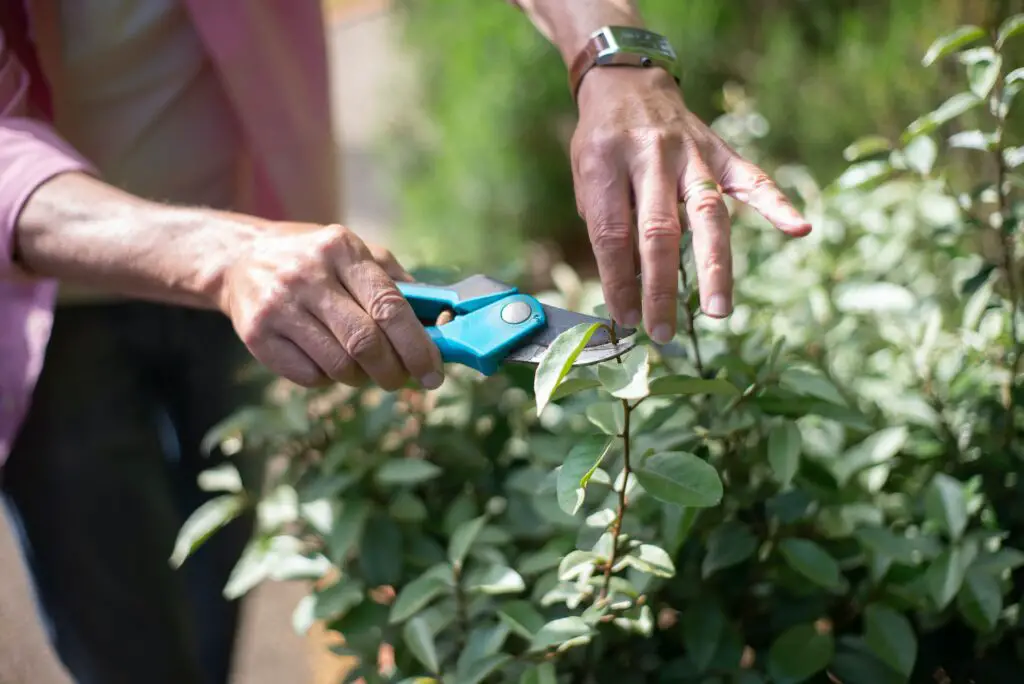
Another important aspect to consider is the plant’s overall health and vigor. If you notice any signs of disease or stress, it is essential to address those issues before pruning. Pruning can put additional stress on the plant, so it is best to wait until it has fully recovered and regained its strength.
By carefully assessing the growth stage and health of your hydroponic plants, you can determine the optimal time to prune them. This will help promote better growth, enhance their overall health, and ultimately increase the yield and quality of your harvest.
• Pruning during the vegetative stage, when plants are actively growing new leaves and stems, allows for better recovery and regrowth after pruning.
• Pruning during the flowering or fruiting stage can disrupt energy allocation and reduce overall yield.
• It is important to address any signs of disease or stress before pruning to prevent additional stress on the plant.
• Carefully assessing the growth stage and health of your hydroponic plants will help determine the optimal time to prune them.
• Pruning at the right time promotes better growth, enhances overall health, and increases yield and harvest quality.
Choosing the Correct Tools and Equipment for Pruning
When it comes to pruning your hydroponic plants, choosing the correct tools and equipment is essential for a successful and efficient process. Using the right tools not only ensures precision and accuracy but also minimizes the risk of injury to both you and your plants.
One of the most basic tools you’ll need for pruning is a pair of sharp pruning shears. These shears allow you to make clean cuts without causing damage to the plant’s tissue. Look for shears with a bypass design, as they provide a cleaner cut than anvil-style shears. Additionally, investing in a pair of long-handled pruning shears can be beneficial for reaching taller plants or those in hard-to-reach spaces.
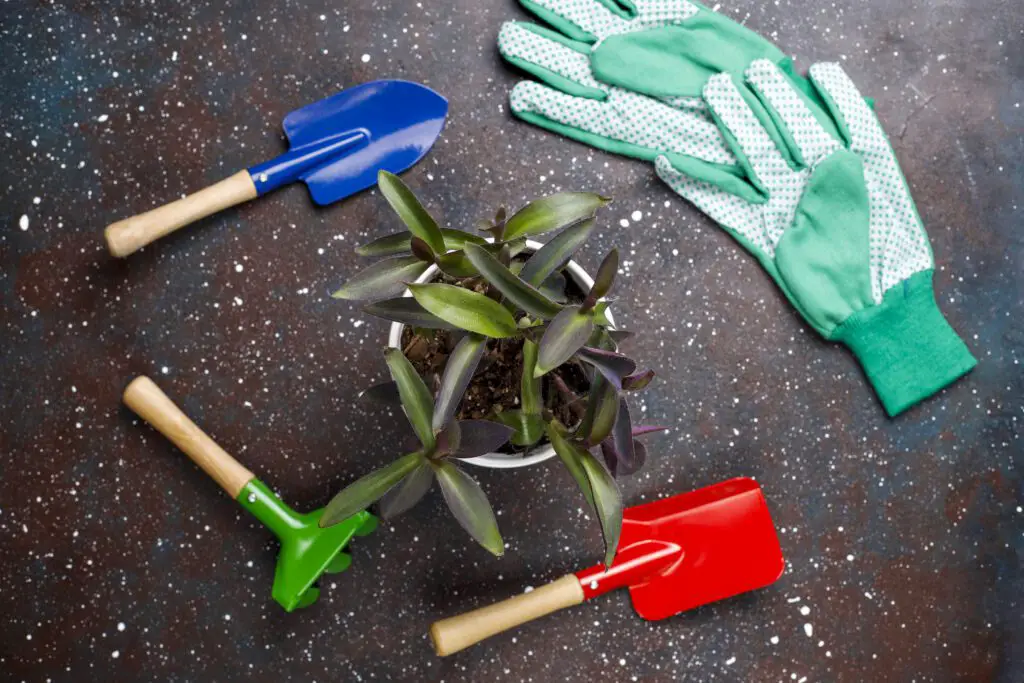
In addition to pruning shears, having a quality pair of scissors is also important. Scissors are particularly useful for fine-tuning your pruning work, such as removing smaller stems or dead leaves. Look for scissors with a comfortable grip and sharp blades for optimal performance. Furthermore, having a pair of sterile blades specific for pruning is crucial to prevent the spread of diseases or infections among your plants. Regularly sanitizing and sterilizing your pruning tools will help maintain their effectiveness while safeguarding your plants’ health.
• Pruning shears are essential for making clean cuts without damaging plant tissue
• Look for pruning shears with a bypass design for cleaner cuts
• Consider investing in long-handled pruning shears for reaching taller plants or hard-to-reach spaces
• Quality scissors are important for fine-tuning pruning work, such as removing smaller stems or dead leaves
• Choose scissors with a comfortable grip and sharp blades
• Use sterile blades specifically designed for pruning to prevent the spread of diseases or infections among plants
• Regularly sanitize and sterilize your pruning tools to maintain their effectiveness and protect plant health
Preparing Your Hydroponic Plants for Pruning
Before you begin pruning your hydroponic plants, it is crucial to properly prepare them for the process. This ensures that your plants are in good health and able to withstand the stress of pruning.
One important step in preparing your plants for pruning is to assess their overall condition. Take the time to closely inspect your plants, looking for any signs of disease or damage. Remove any diseased or damaged plant parts, as these can hinder the growth and development of your plants. Additionally, check for any pests or insects that may be present, as they can also negatively impact the health of your plants.
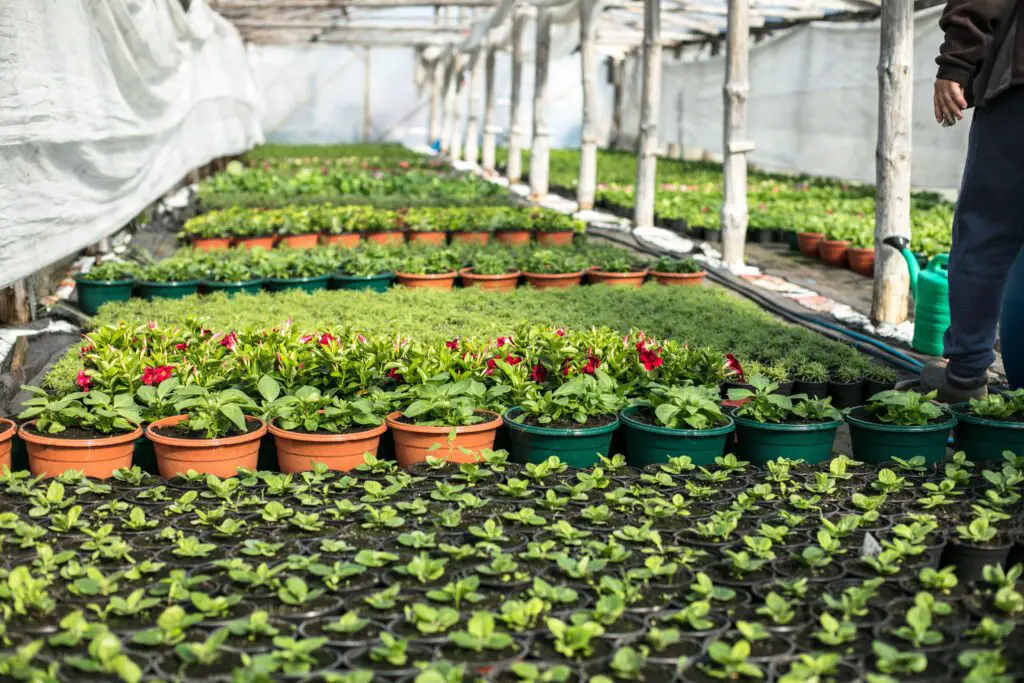
Next, you will want to ensure that your plants are receiving optimal nutrition. Make sure that they are well-fed and properly hydrated before pruning. This will help them to be more resilient during the pruning process and promote healthy regrowth afterward. It is also important to consider the stage of growth your plants are in. Pruning at different stages will have different effects, so be aware of the specific needs of your plants at different points in their growth cycle. By taking these steps to prepare your hydroponic plants, you can set the stage for successful pruning and promote their overall growth and vitality.
• Assess the overall condition of your hydroponic plants before pruning
• Look for signs of disease or damage and remove any affected plant parts
• Check for pests or insects that may be present and take necessary actions to eliminate them
• Ensure that your plants are well-nourished and properly hydrated before pruning
• Consider the stage of growth your plants are in, as pruning at different stages will have different effects on their growth cycle
Ensuring Proper Hygiene and Sterilization Practices
Proper hygiene and sterilization practices are crucial when it comes to maintaining the health and well-being of your hydroponic plants. By ensuring a clean and sanitized environment, you can minimize the risk of disease and contamination, allowing your plants to thrive.
One of the first steps in promoting good hygiene is to regularly clean and disinfect your hydroponic system. This includes sanitizing the reservoir, pipes, and any other equipment used in your setup. By removing any built-up algae, bacteria, or other potential contaminants, you can prevent the spread of disease and create a more favorable growing environment for your plants.
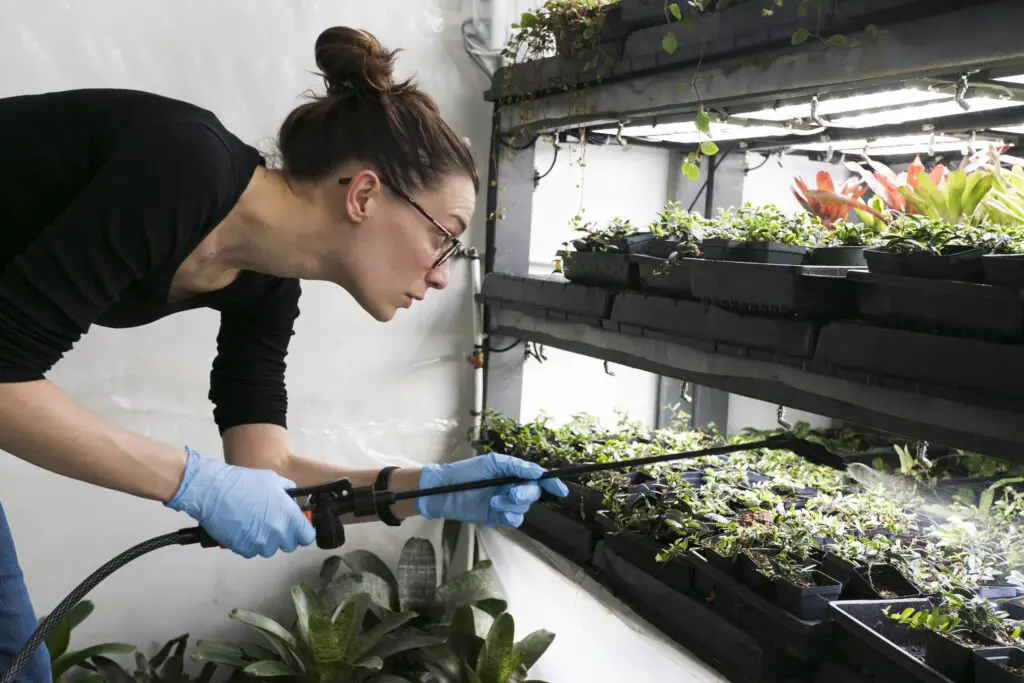
In addition to overall system cleanliness, it is also important to practice proper personal hygiene when tending to your hydroponic plants. This means washing your hands thoroughly before and after handling the plants, as well as wearing clean gloves to minimize the risk of introducing harmful pathogens. Taking these simple precautions can go a long way in safeguarding the health of your plants and ensuring optimal growth.
• Regularly clean and disinfect your hydroponic system, including the reservoir, pipes, and equipment used.
• Remove any built-up algae, bacteria, or contaminants to prevent disease spread.
• Practice proper personal hygiene by washing hands thoroughly before and after handling plants.
• Wear clean gloves to minimize the risk of introducing harmful pathogens.
• These precautions safeguard plant health and promote optimal growth.
Identifying and Removing Diseased or Damaged Plant Parts
One of the key aspects of maintaining the health and vitality of your hydroponic plants is identifying and removing any diseased or damaged plant parts. Diseased or damaged plant parts not only detract from the overall appearance of your plants, but they can also negatively impact their growth and development. It is therefore essential to regularly inspect your plants for any signs of disease or damage.
To identify diseased plant parts, look for any visible symptoms such as discoloration, wilting, spots, or lesions. These can indicate the presence of fungal, bacterial, or viral infections. Additionally, pay attention to any abnormal growth patterns or deformities, as these can also be signs of disease. It is important to note that some diseases may not have obvious symptoms, so it is crucial to be vigilant in your observations.
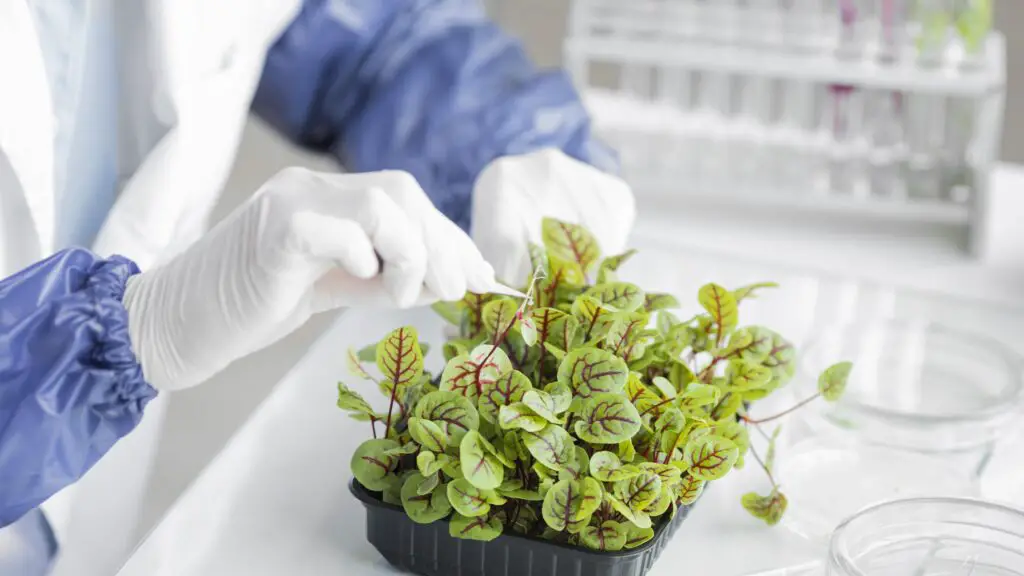
Once you have identified any diseased or damaged plant parts, it is imperative to remove them promptly. Pruning tools such as sterilized shears or scissors can be used to carefully cut away the affected areas. It is crucial to ensure that you sterilize your pruning tools before and after each use to prevent the spread of disease. By removing diseased or damaged plant parts, you not only prevent the further spread of pathogens but also encourage healthy regrowth and improve the overall health of your hydroponic plants.
• Regularly inspect your plants for any signs of disease or damage
• Look for visible symptoms such as discoloration, wilting, spots, or lesions
• Pay attention to abnormal growth patterns or deformities
• Be vigilant in your observations as some diseases may not have obvious symptoms
• Use sterilized pruning tools like shears or scissors to remove affected areas
• Sterilize your pruning tools before and after each use to prevent the spread of disease
• Removing diseased or damaged plant parts prevents further spread of pathogens
and encourages healthy regrowth
Promoting Air Circulation and Light Penetration through Pruning
To promote optimal growth and health in hydroponic plants, it is essential to ensure proper air circulation and light penetration in the growing environment. Pruning plays a crucial role in achieving these goals. By carefully removing excess foliage and strategically thinning out the canopy, you can create a more open and spacious arrangement for your plants.
One of the main benefits of promoting air circulation through pruning is that it helps prevent the development and spread of fungal diseases. When plants are densely packed and air can’t freely circulate, moisture tends to accumulate, creating a favorable environment for fungal pathogens. By pruning away excess foliage and creating space between plants, you reduce humidity levels and allow air to flow more freely, minimizing the risk of disease.
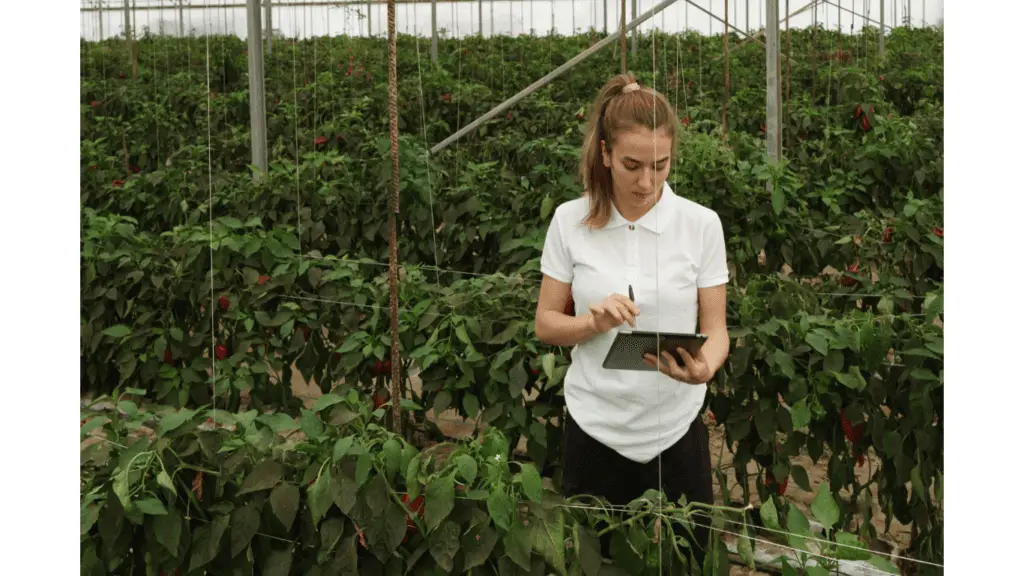
In addition to disease prevention, pruning also enhances light penetration in the canopy, which is vital for optimal plant growth and development. Light is a primary source of energy for plants through photosynthesis, and without adequate light exposure, plants may become weak, leggy, or fail to produce abundant yields. By selectively removing unnecessary leaves and branches, you allow light to reach deeper into the plant structure, ensuring that all parts receive the energy they need for healthy growth.
• Pruning promotes air circulation by creating a more open and spacious arrangement for plants.
• Proper air circulation helps prevent the development and spread of fungal diseases.
• Pruning reduces humidity levels, minimizing the risk of disease in hydroponic plants.
• Enhanced light penetration is another benefit of pruning in hydroponics.
• Light is essential for photosynthesis and optimal plant growth and development.
• Without adequate light exposure, plants may become weak, leggy, or fail to produce abundant yields.
• Selectively removing unnecessary leaves and branches allows light to reach deeper into the plant structure.
Maintaining an Ideal Plant Structure through Pruning Techniques
Pruning is an essential technique for maintaining an ideal plant structure in hydroponic systems. By carefully removing excess growth and shaping the plants, you can ensure better growth and overall health. Pruning helps to control the size and shape of the plants, allowing for better utilization of space in your hydroponic setup.
One key benefit of maintaining an ideal plant structure is the promotion of airflow and light penetration. Through judicious pruning, you can create a more open and airy canopy, allowing for better circulation of air within the plants. This reduction in humidity and increased airflow helps prevent the development of diseases and molds. Additionally, pruning helps to ensure that each leaf receives adequate light, maximizing photosynthesis and promoting healthy growth.
By employing various pruning techniques, such as removing lateral branches or thinning out dense foliage, you can optimize the overall growth and structure of your hydroponic plants. This includes ensuring that the main stem is well-supported and free from competing branches, allowing it to grow strong and tall. A well-maintained plant structure not only enhances the aesthetic appeal of your garden but also facilitates efficient nutrient uptake and distribution, leading to healthier and more productive plants.
As you continue to delve into the fascinating world of pruning techniques for your hydroponic plants, you will discover a multitude of strategies catered to different types of plants. Whether you are cultivating leafy greens or fruit-bearing plants, specific pruning methods can help you achieve the desired results. Stay tuned for our upcoming articles that explore pruning strategies for various hydroponic plant types.
• Pruning is essential for maintaining an ideal plant structure in hydroponic systems
• It helps control the size and shape of plants, optimizing space utilization
• Promotes airflow and light penetration by creating an open canopy
• Reduces humidity and prevents diseases and molds
• Ensures each leaf receives adequate light for healthy growth through photosynthesis
• Various pruning techniques can optimize overall growth and structure of plants
• Supports the main stem’s growth by removing competing branches
• Enhances the aesthetic appeal of the garden while facilitating nutrient uptake
and distribution
• Different pruning methods catered to specific types of hydroponic plants
Encouraging Stronger and Healthier Stem Growth
To encourage stronger and healthier stem growth in your hydroponic plants, proper pruning techniques are essential. Pruning not only helps to remove any weak or diseased stems, but it also stimulates new growth and improves overall plant vigor.
One important technique for encouraging stronger stems is to make clean and precise cuts. This reduces the risk of introducing infections or causing unnecessary damage to the plant. Always use sharp, sterile pruning shears or scissors specifically designed for hydroponic gardening.
Another effective strategy is to remove any side shoots or suckers that compete for nutrients and weaken the main stem. By doing so, you direct the plant’s energy towards the development of a robust central stem. Additionally, removing any excess foliage at the base of the plant can enhance air circulation and reduce the risk of fungal diseases.

By implementing these pruning techniques, you can promote stronger and healthier stem growth in your hydroponic plants. Remember, maintaining a sturdy stem is crucial for supporting the overall structure of the plant and facilitating nutrient uptake.
• Make clean and precise cuts using sharp, sterile pruning shears or scissors
• Remove side shoots or suckers that compete for nutrients and weaken the main stem
• direct the plant’s energy towards developing a strong central stem
• Enhance air circulation by removing excess foliage at the base of the plant
• Reduce the risk of fungal diseases by improving air circulation
• Maintain a sturdy stem to support the overall structure of the plant
• Facilitate nutrient uptake through a strong and healthy stem
Optimizing Nutrient Uptake and Distribution through Pruning
To optimize nutrient uptake and distribution through pruning, it is essential to understand the role of different plant parts in this process. The main organs responsible for nutrient absorption are the roots, which extract water and nutrients from the hydroponic solution. However, by strategically pruning certain parts of the plant, you can enhance the efficiency of nutrient uptake and distribution throughout the entire plant system.
One method to optimize nutrient uptake is by removing excessive foliage and non-productive branches. This allows the plant to redirect its energy towards more productive areas, such as the fruit or flowers. By eliminating unnecessary foliage, the plant can prioritize the absorption of nutrients into its vital parts, resulting in increased overall nutrient uptake. Pruning also helps to ensure that resources are allocated more efficiently, preventing nutrient deficiencies in specific regions of the plant and promoting a more balanced distribution of nutrients.
• Removing excessive foliage and non-productive branches redirects energy toward more productive areas
• Prioritizes absorption of nutrients into vital parts of the plant
• Increases overall nutrient uptake
• Ensures efficient allocation of resources
• Prevents nutrient deficiencies in specific regions
• Promotes balanced distribution of nutrients
Pruning Techniques for Different Types of Hydroponic Plants
Different types of hydroponic plants require different pruning techniques to ensure optimal growth and health. Leafy greens, such as lettuce and kale, benefit from leaf removal to promote air circulation and light penetration. By gently removing older or damaged leaves, you can encourage new growth and prevent the spread of diseases. For fruit-bearing plants like tomatoes and cucumbers, proper pruning involves selectively removing suckers or side shoots. This directs the plants’ energy towards fruit production, resulting in larger and more flavorful harvests.
Another important aspect of pruning in hydroponic systems is the management of the plant’s canopy structure. By maintaining an ideal plant structure through pruning techniques such as topping or pinching, you can control the height and shape of the plant. This not only helps to optimize light distribution but also facilitates easier nutrient uptake and facilitates the overall management of the plant’s growth.

It is crucial to note that while pruning offers numerous benefits, it must be done with care and precision. Over-pruning can weaken the plant and hinder its growth while under-pruning can lead to overcrowding and reduced air circulation. Therefore, it is vital to understand the specific needs of each type of hydroponic plant and adapt pruning techniques accordingly. With the right knowledge and skills, you can harness the power of pruning to enhance the productivity and vitality of your hydroponic garden.
• Leafy greens like lettuce and kale benefit from the removal of older or damaged leaves to promote air circulation and light penetration.
• Pruning fruit-bearing plants such as tomatoes and cucumbers involves selectively removing suckers or side shoots to direct energy towards fruit production.
• Managing canopy structure through pruning techniques like topping or pinching helps control plant height, shape, light distribution, nutrient uptake, and overall growth management.
• Careful pruning is essential; over-pruning weakens plants while under-pruning leads to overcrowding and reduced air circulation.
• Understanding the specific needs of each hydroponic plant type is vital for adapting pruning techniques accordingly.
Pruning Strategies for Leafy Greens in Hydroponic Systems
Leafy greens are a popular choice for hydroponic systems due to their quick growth and high nutritional value. Pruning plays a crucial role in maintaining the health and productivity of these plants. One important strategy for pruning leafy greens is to remove any yellow or damaged leaves. These leaves are not only unsightly, but they can also become a breeding ground for pests and diseases. Regularly inspect your plants and remove any yellow or damaged leaves to promote healthy growth and prevent the spread of pathogens.

Another effective pruning strategy for leafy greens is to thin out overcrowded plants. Overcrowding can lead to competition for resources, such as nutrients and light, which can hinder the growth of your plants. By selectively removing some of the weaker or less productive plants, you allow the remaining ones to receive the necessary resources. This promotes better airflow and light penetration, reducing the risk of mold and disease. Additionally, thinning out overcrowded plants ensures that each plant has enough space to develop a strong root system and maximize its growth potential.
• Remove any yellow or damaged leaves to prevent pests and diseases
• Regularly inspect plants for yellow or damaged leaves
• Thin out overcrowded plants to reduce competition for resources
• Selectively remove weaker or less productive plants
• Promote better airflow and light penetration by thinning out overcrowded plants
• Reduce the risk of mold and disease by thinning out overcrowded plants
• Ensure each plant has enough space to develop a strong root system
Pruning Methods for Fruit-Bearing Hydroponic Plants
Pruning fruit-bearing hydroponic plants is crucial for maximizing their productivity and overall health. By implementing the right pruning methods, you can ensure better fruit quality, increased yields, and stronger plant structure.
One effective pruning method for fruit-bearing hydroponic plants is selective pruning. This technique involves removing specific branches, shoots, or foliage to encourage the growth of stronger and more productive branches. By eliminating the weaker or unproductive parts of the plant, you allow more nutrients to be distributed to the healthier branches, resulting in better fruit production.
Another important pruning method for fruit-bearing hydroponic plants is thinning. This process involves removing excess fruits or flower buds to ensure that the plant’s energy is directed towards fewer fruits, allowing them to develop to their full potential. Thinning also prevents overcrowding, which can lead to poor air circulation and increased disease risks.
When pruning fruit-bearing hydroponic plants, it is essential to maintain a balance between pruning for increased yield and preserving the plant’s structural integrity. By following these pruning methods, you can optimize the growth, productivity, and overall health of your fruit-bearing hydroponic plants.
• Selective pruning: Remove weaker or unproductive branches, shoots, or foliage to promote the growth of stronger and more productive branches.
• Thinning: Remove excess fruits or flower buds to direct the plant’s energy towards fewer fruits for better development and prevent overcrowding.
• Maintain a balance between pruning for increased yield and preserving the plant’s structural integrity.
Addressing Common Pruning Challenges and Mistakes
One of the common challenges that gardeners may encounter when pruning hydroponic plants is the risk of over-pruning. It can be tempting to remove as many branches and leaves as possible, thinking that it will promote better growth. However, excessive pruning can actually stress the plants and inhibit their ability to regenerate and produce energy through photosynthesis. Therefore, it is crucial to strike a balance between removing unwanted parts and maintaining the plant’s overall health and vitality.
Another mistake that gardeners often make is neglecting the importance of proper sterilization before pruning. Failing to sterilize tools and equipment can introduce harmful pathogens or pests to the plants, leading to infections or infestations that can severely damage or even kill the plants. To prevent this, it is essential to thoroughly clean and sanitize pruning tools, including blades, shears, or scissors, before and after each use. This practice helps ensure a safe and disease-free pruning process, promoting the overall well-being of the hydroponic plants.
• Over-pruning can stress plants and inhibit their ability to regenerate
• Strike a balance between removing unwanted parts and maintaining plant health
• Excessive pruning can hinder photosynthesis and growth
• Proper sterilization before pruning is crucial to prevent infections or infestations
• Failure to sterilize tools can introduce harmful pathogens or pests
• Thoroughly clean and sanitize pruning tools before and after each use
• Safe and disease-free pruning process promotes the overall well-being of hydroponic plants
Monitoring and Assessing the Impact of Pruning on Plant Growth
Assessing the impact of pruning on plant growth is an essential step in the hydroponic gardening process. By monitoring the effects of pruning, you can gather valuable information about the overall health and development of your plants. One important aspect to consider is the growth rate of the pruned plants compared to those left unpruned. By measuring the growth rate over a specific period, you can determine if pruning has positively influenced plant growth.
In addition to the growth rate, it is also important to evaluate the quality of the produce obtained from pruned plants. This can be done by assessing the yield, size, and nutritional content of the harvested crops. By comparing the produce from pruned and unpruned plants, you can determine if pruning has resulted in higher quality and more desirable outcomes. Moreover, you can also observe any changes in pest and disease incidence in the pruned plants, as pruning can promote better airflow and reduce the risk of infestation.
To accurately assess the impact of pruning on plant growth, it is recommended to document your findings and compile data throughout the growing season. This will allow you to track any changes or trends that occur over time. It is beneficial to use a gardening journal or spreadsheet to record information such as plant measurements, yields, disease occurrences, and any other relevant observations. Regularly reviewing and analyzing this data will provide valuable insights into the effectiveness of your pruning practices and help you make informed decisions for future pruning endeavors.
• Assess the growth rate of pruned plants compared to unpruned plants
• Measure the growth rate over a specific period to determine if pruning has positively influenced plant growth
• Evaluate the quality of produce obtained from pruned plants by assessing yield, size, and nutritional content
• Compare produce from pruned and unpruned plants to determine if pruning has resulted in higher-quality outcomes
• Observe any changes in pest and disease incidence in pruned plants due to improved airflow after pruning
• Document findings and compile data throughout the growing season for accurate assessment
• Use a gardening journal or spreadsheet to record plant measurements, yields, disease occurrences, and other observations
• Regularly review and analyze data for insights into the effectiveness of pruning practices
• Make informed decisions for future pruning endeavors based on analyzed data
Implementing a Pruning Schedule for Continued Success
To ensure the continued success of your hydroponic plants, it is crucial to implement a pruning schedule. Pruning plays a vital role in maintaining plant health, promoting optimal growth, and maximizing productivity. By following a well-planned pruning routine, you can address specific plant needs, prevent overcrowding, and control the overall shape and structure of your plants.
One important aspect of implementing a pruning schedule is understanding the unique requirements of each type of hydroponic plant. Different plants have varying growth patterns and respond differently to pruning techniques. For instance, leafy greens such as lettuce or spinach may require frequent pruning to encourage new growth and prevent them from becoming too dense. On the other hand, fruit-bearing plants like tomatoes or peppers may benefit from strategic pruning to redirect energy towards fruit production. By tailoring your pruning approach to the specific needs of your plants, you can ensure that they receive the care they need to thrive.
In addition to considering the individual requirements of your plants, it is important to establish a regular pruning routine. Consistency is key when it comes to pruning, as it allows for better control over plant growth and helps prevent the accumulation of dead or diseased plant parts. Depending on the type of plant and its growth rate, you may need to prune on a weekly, bi-weekly, or monthly basis. By making pruning a regular part of your gardening routine, you can maintain an optimal plant structure, promote better air circulation, and prevent the spread of pests or diseases.
• Pruning plays a vital role in maintaining plant health, promoting optimal growth, and maximizing productivity.
• By following a well-planned pruning routine, you can address specific plant needs, prevent overcrowding, and control the overall shape and structure of your plants.
• Understand the unique requirements of each type of hydroponic plant to tailor your pruning approach accordingly.
– Leafy greens may require frequent pruning to encourage new growth and prevent denseness.
– Fruit-bearing plants may benefit from strategic pruning to redirect energy towards fruit production.
• Establish a regular pruning routine for consistency and better control over plant growth.
– Prune on a weekly, bi-weekly, or monthly basis depending on the type of plant and its growth rate.
• Regular pruning maintains an optimal plant structure, promotes better air circulation, and prevents the spread of pests or diseases.
By incorporating these 17 comprehensive topics, you will gain the knowledge and skills necessary to effectively prune your hydroponic plants, ensuring their better growth and overall health.
Pruning plays a vital role in ensuring the optimal growth and overall health of hydroponic plants. By incorporating the comprehensive topics covered in this article, you will gain valuable knowledge and essential skills to effectively prune your hydroponic plants.
Through proper pruning techniques, you can promote better air circulation and light penetration, which are crucial for the overall development of your plants. By removing diseased or damaged plant parts, you can prevent the spread of diseases and enhance the overall vitality of your hydroponic garden.
Furthermore, pruning helps maintain an ideal plant structure, encouraging stronger and healthier stem growth. It also facilitates optimum nutrient uptake and distribution, ensuring that your plants receive the necessary nutrients for robust growth. With the right pruning strategies, you can achieve remarkable results, regardless of the type of hydroponic plants you are cultivating.
Stay tuned as we delve deeper into each topic, providing you with valuable insights and practical tips to master the art of pruning in hydroponics.
• Proper pruning techniques promote better air circulation and light penetration.
• Removing diseased or damaged plant parts prevents the spread of diseases.
• Pruning helps maintain an ideal plant structure for stronger stem growth.
• Optimum nutrient uptake and distribution are facilitated through pruning.
• Remarkable results can be achieved with the right pruning strategies.
Why is pruning important for hydroponic plants?
Pruning is important for hydroponic plants because it helps promote air circulation and light penetration, maintains an ideal plant structure, encourages stronger stem growth, and optimizes nutrient uptake and distribution.
How do I identify the right time to prune my hydroponic plants?
The right time to prune hydroponic plants is typically when they have reached a certain growth stage or when you notice diseased or damaged plant parts that need to be removed.
What tools and equipment do I need for pruning hydroponic plants?
Some common tools and equipment for pruning hydroponic plants include pruning shears, scissors, sterilized blades, gloves, and disinfectants.
How should I prepare my hydroponic plants for pruning?
Before pruning, it is important to clean and sterilize your tools, wash your hands, and ensure that your plants are well-hydrated and in a healthy state.
Why is hygiene and sterilization important during pruning?
Hygiene and sterilization practices are important during pruning to prevent the spread of diseases or infections from one plant to another.
How do I identify and remove diseased or damaged plant parts during pruning?
Look for signs of discoloration, wilting, or abnormal growth on your hydroponic plants. Use sterilized tools to carefully remove these diseased or damaged parts.
How does pruning promote air circulation and light penetration?
Pruning helps remove excess foliage, allowing air to circulate more freely within the plants. It also opens up space for light to reach lower parts of the plant, promoting overall growth.
What pruning techniques can I use to maintain an ideal plant structure?
Techniques such as topping, pinching, and thinning can be used to maintain an ideal plant structure by controlling the growth and shape of the plants.
How does pruning encourage stronger and healthier stem growth?
By removing weaker or unnecessary stems, pruning redirects the plant’s energy towards strengthening the remaining stems, resulting in stronger and healthier growth.
How does pruning optimize nutrient uptake and distribution?
Pruning helps remove overcrowded or competing branches, allowing the plant to focus its energy and resources on absorbing and distributing nutrients more efficiently.
What are some pruning techniques for different types of hydroponic plants?
Different plants may require specific pruning techniques, such as tip pruning for herbs or selective pruning for vine plants. It is important to research and understand the needs of each plant type.
How should I prune leafy greens in hydroponic systems?
Leafy greens can benefit from regular light pruning to encourage new growth and maintain a compact and healthy shape.
What pruning methods are recommended for fruit-bearing hydroponic plants?
Fruit-bearing hydroponic plants may require more specific pruning methods, such as removing suckers or selectively thinning branches to enhance fruit production and quality.
What are some common pruning challenges and mistakes to avoid?
Some common challenges and mistakes in pruning include over-pruning, improper technique, pruning at the wrong time, and not properly sterilizing tools, which can lead to plant damage or disease spread.
How do I monitor and assess the impact of pruning on plant growth?
Regularly observe and track the growth and health of your plants after pruning. Assess factors such as new growth, overall plant vitality, and fruit production to determine the impact of pruning.
Should I implement a pruning schedule for my hydroponic plants?
Yes, implementing a pruning schedule can help ensure consistent and effective pruning, promoting the long-term health and growth of your hydroponic plants.

Kanike Sreekanth, a prolific writer at SouthElMonteHydroponics, brings a unique blend of creativity and scientific rigor to the table. With a degree in Horticulture from a prestigious institution, Kanike’s expertise spans hydroponic farming, plant biology, and agricultural sustainability. Their passion for exploring innovative cultivation methods and promoting environmental stewardship drives them to uncover new insights in the realm of hydroponics. Kanike’s writing serves as a conduit for sharing their knowledge and inspiring others to embrace alternative farming practices for a more sustainable future.

